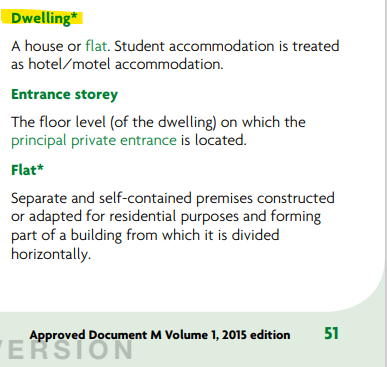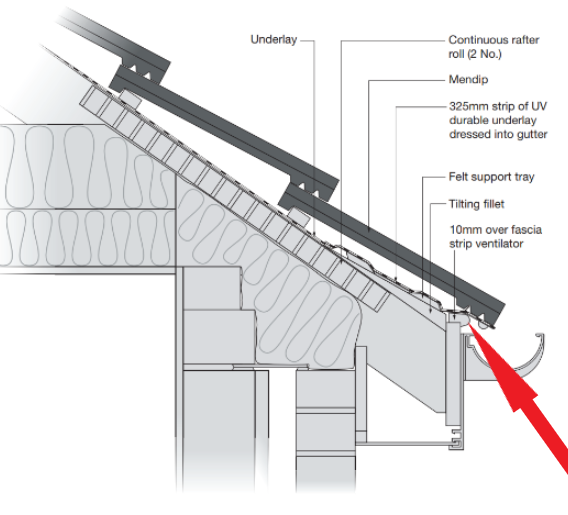
Beagle2
Members-
Posts
14 -
Joined
-
Last visited
Beagle2's Achievements

Member (3/5)
1
Reputation
-
Building Regulations - Internal Sliding Doors
Beagle2 replied to Beagle2's topic in Building Regulations
Thanks a lot for the reply, it's a simple two room, single story domestic building. Annex to an existing dwelling. My basic research suggests that it does not require a fire door? (not an HMO, 1 story, no connected garage) What about passage of sound? I'm unclear how/if acoustic performance is applied to internal doors -
Hello, I am working on a small barn conversion. Change of use - agricultural to 1 bed annex Basically, there are two rooms.... bedroom and sitting room separated by a stud wall. Space is a premium and I'm considering an internal sliding door between the two.... These 'barn rail' type seem ok. Is there anything to be cautious about from a regulation point of view? I can find no direct restrictions of sliding doors in any approved doc Thanks all
-
Hello, I have planning permission to convert a detached outbuilding into a small 'ANNEX' (not a 'dwelling'). The annex is just for visiting relatives and will have one bedroom and a small ensuite bathroom. No kitchen and will not be self-contained in relation to the main house . I want to design the bathroom and wish to know the minimum size I can make it. Can anyone help with which 'Part M applies? Here are the options: Volume 1 - Dwellings Volume 2 - Buildings other than dwellings Or Part M doesn't apply? The regs give the following definition of a dwelling.... our annex is not a 'house or flat'.... Any ideas greatly received, thanks
-
Thanks jfb, re. existing cills, do you mean angled down immediately from the base of the window? Or fell off due to a lack of suitable fixings :)? Shall I mock up a drawing as the joiner describes and submit to BC? Ideally I want to reference some sort of best-practice guideline. But as mentioned can’t find anything for old barn conversions. I want to get it right first time as some of the other works have taken a bit of, er, discussion. (This has always been down to differences in heritage/modern techniques)
-
Hello, I'm starting drawings for full plans approval to install windows on my small barn conversion. Walls are solid 'rubble masonry' with lime mortar (pic below). The original windows (Crittall type) were just nailed into masonry and mortared around. I can't seem to find a suitable detail for solid walls. The book I bought is all for modern construction with double skinned walls, cavity closers, air tightness tape etc. I've had wooden casement windows built and want to install the units onto large slate cills. The window joiner said just put a strip of DPC beneath the cill and secure using wedges, fasteners, expanding foam etc. The wall should be able to breathe (lime mortar) so I don't see what the DPC adds. Can anyone recommend a publication/source for windows in barn conversions? Basically like the attached drawing but for solid walls Thanks everyone
-
Hello, I'm doing a small barn conversion and am working on the eaves detail. This blog post from LABC appears good, but when studied the diagram makes no sense (to me :)). Tilt fillet or proprietary eaves ventilator? | LABC The LABC blog states "The tiles shouldn’t be just rested on the fascia board as that is not what it is for, it’s bad practice, and makes replacement fascia work harder." However the diagram shows exactly this, all be it resting on a ventilator strip (secured to the fascia). All the examples I can see online (Tyvek technical manual, NHBC 7.2.19 etc) show the first course resting on the fascia. If a slate can't rest on the fascia then what is done? add a lower batten a few mm above the fascia? LABC are not responding and looks like someone else has asked this in the comments Thanks
-
Minimum Slate Size - Building Regulations / NHBC / BS 5534
Beagle2 replied to Beagle2's topic in Building Regulations
Thank you Kandgmitchell, this is just what I was looking for. I'm going to follow the SPAB guide combined with a modern breathable membrane, copper fixings and BS 3455 batten spec (rather than chestnut lath and oak pegs :)). I may wet lay the final courses depending on slate size left at this point. It might be just me, from (limited) experience I find BC deep dive into some details but others are just 'yeah whatever, great'. Probably should have gone Full Plans rather than Building Notice. -
Minimum Slate Size - Building Regulations / NHBC / BS 5534
Beagle2 replied to Beagle2's topic in Building Regulations
Hello, any thoughts what’s enforceable by LABC? -
Minimum Slate Size - Building Regulations / NHBC / BS 5534
Beagle2 replied to Beagle2's topic in Building Regulations
Hello, Thanks for all the quick replies, sorry for the delay. I should add that I have no doubt the slates I have are fine and with a suitable headlap will not leak. I may even move to a triple lap as described in this guide: https://www.spab.org.uk/sites/default/files/SPAB Technical advice note-Slating in South West England.pdf (The tin roof was put on by my father when most of the wooden pegs holding the slates rotted) My question is what is actually enforceable by LABC? Just the approved reg documents or any relevant BS standard etc? Say I install a lovely high standard roof, completely in keeping with the surrounding buildings. Only to find LABC state the slates do not meet the minimum size (regardless of headlap) as described by BS 5534. Here is an extract from BS 5534 displaying minimum slate size dependent on pitch: http://www.sigaslate.co.uk/knowledgebase/design-guidance/headlap-tables-for-natural-slate-bs-5534/ Why don’t we just ask LABC? Well, to date everything we have asked in advance has ended in lengthy debate often costing 3rd party advice to convince our point. -
Hello, I’m converting a small barn to a dwelling which is listed by curtilage. Planning and listed building consent was done by me. I’m now on the build phase and am finding the Building Control side tricky. Roof was originally slated, a tin roof was put on in the 1960s. We still have a lot of the old slate onsite and want to reuse it. However, pitch is fairly low (~26 deg). According to BS 5534, minimum slate size for my roof is 500 mm x 250 mm (double lap) with a headlap of 91 mm, i.e. way larger the the original slates. NHBC and Building Regs (Part C) don’t seem to mention slate size. What can LABC actually enforce? Just Building Regulations Approved Documents? Or any recognised best practice guidelines? Apologies if this is a basic question.
-
Hello, I’m a part time care specialist and full time self builder in north Devon. Starting a barn conversion and looking for advice :)




